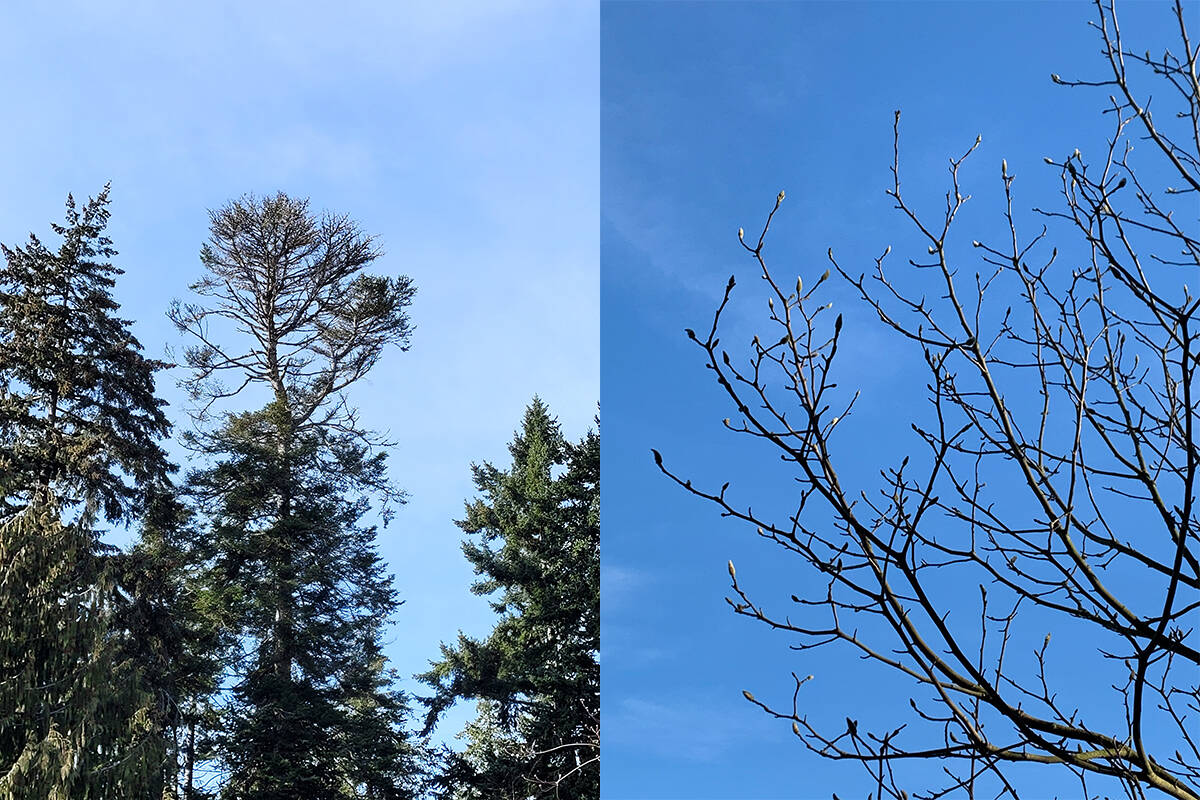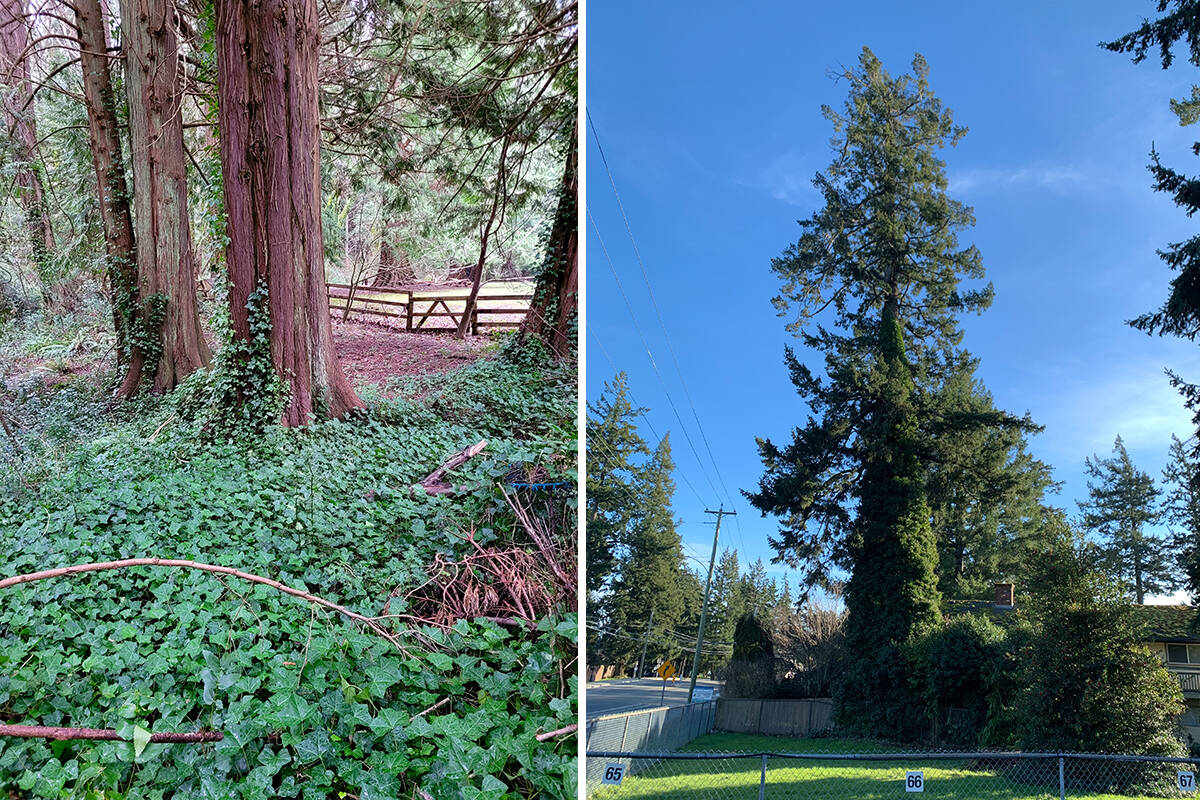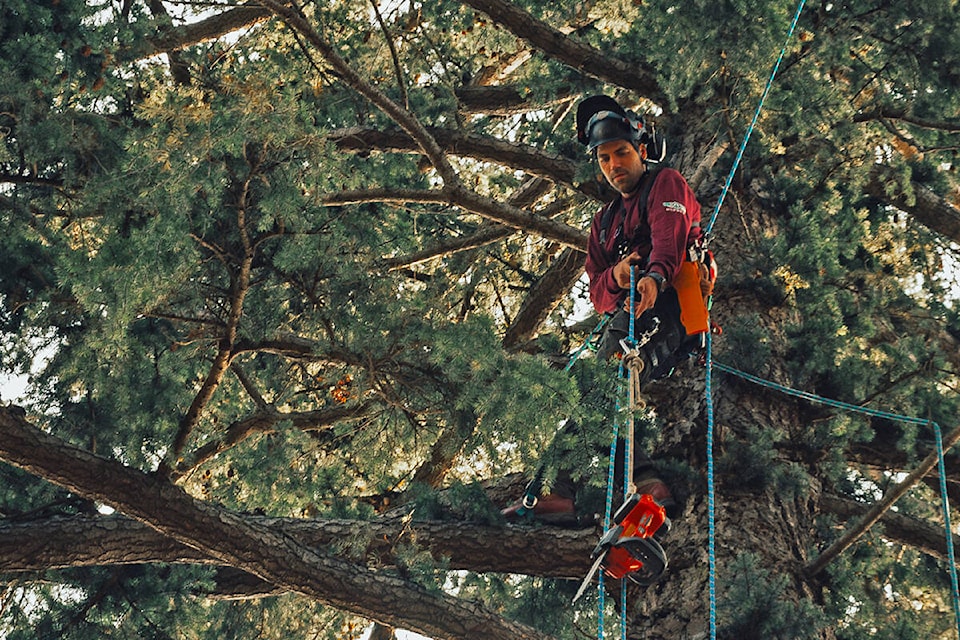ISA Certified Arborist Chris McVey from Osprey Tree Service in Victoria’s West Shore is back with answers to more of your tree maintenance questions.
When is the best time to prune my tree?
“Winter dormancy is the best time to prune most trees. It can be easier to spot the deadwood when leaves aren’t present, and it’s less stressful on the tree,” Chris says. “Regular pruning helps take control of new growth, improving both the tree’s form and function.”
The one exception is flowering ornamental trees like cherry, magnolia, crabapple and others. To maximize future flower displays, trees should be pruned in spring after the current year’s flowers begin to fade, and before new leaves emerge. Contact Osprey Tree Service now to get an estimate, and it will be easier to schedule pruning during the optimal window in March.
“Any dead, diseased or rubbing branches you spot at any time of year are cause for immediate concern — if they’re hitting your house, for example — they can be pruned at any time of year,” Chris says.

I’ve noticed more needles than usual accumulating on my property. Is that bad?
Needles, like leaves, will drop on your yard from time to time, but have a closer look if you notice a recent, large deposit under a single or few specific trees. It may be a sign that they’re stressed from the many years of drought the Island has experienced.
On a clear day, take photos of the top of the tree from a distance, and also from under the tree next to the stem. It can be helpful to have a reference to compare to in the future, if more needles are dropping and the tree is declining.
Some species, in particular Grand Firs, are dying back or struggling to survive because of the hot, dry summers. These trees tend to decline rather quickly once they start to die. Determining if the tree will require removal is safer and cheaper to do sooner than later.
“It can become too dangerous for an arborist to climb high up in Grand Firs if sap rot and other internal tree decay start to run their course. They then may require a crane to remove the top which will significantly increase the cost to remove the tree.”
Call early, and an arborist may be able to remove the tree’s top safely, preserving the bottom of the tree as a wildlife habitat if desired.

Is ivy harmful to trees? How do I remove ivy from a tree?
Whimsical English Ivy was originally grown on English castles to hold the stones together and reduce drafts. Unfortunately, it is an invasive species on Vancouver Island. Commonly sold in small pots at plant nurseries, it rapidly out-competes native species in the undergrowth and spreads easily. Chris says homeowners should monitor their property edges for English Ivy, and prevent its spread.
“You can remove it fairly easily if you spot it from the beginning. Just be sure to bag ivy and take it to the landfill — if you toss it in the woods at your property edge, it will regrow. Burning or composting at home won’t necessarily kill all plants either, so it’s best to bag it and take it to the landfill.”
English Ivy carries some pathogens that can be harmful to trees. Cut above-ground vines as high up as you can safely reach, being careful not to cut the tree. The ivy’s roots attach to the tree’s bark, so wait for upper portions to die before pulling them down. Lower portions can be pulled up by the roots.
An arborist can safely climb the tree to remove ivy, and properly dispose of it.
Osprey Tree Service is based on the West Shore of Victoria, BC and serves southern Vancouver Island and the Gulf Islands. Their qualified team of certified arborists, forestry professionals and wildland firefighters offer residential and commercial tree removal, maintenance and assessments. Learn more at ospreytreeservice.ca. For a free quote, call 250-474-7993 or email info@ospreytreeservice.ca.
